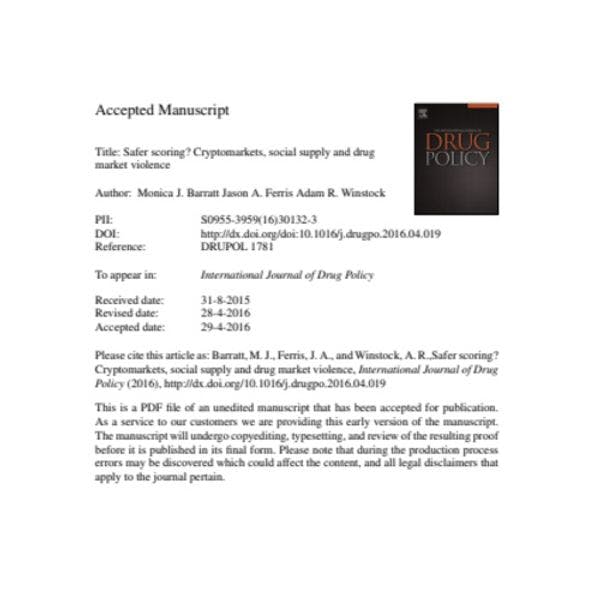Safer scoring? Cryptomarkets, social supply and drug market violence
By Monica J.Barratt
Participants in markets for illegal goods and services are not afforded the usual protections of legal systems that govern fair business conduct. Contracts and agreements within criminal networks are deliberately ambiguous or absent, a result of actors’ attempts to evade prosecution, making dispute resolution even more difficult (Reuter, 2009). Given these conditions, violence (e.g. assault, homicide) may be utilised as a tool for resolving disputes between networks and within networks (Reuter, 2009), as well as for maintaining reputation, recovering losses and to enact vengeance (Topalli, Wright, & Fornango, 2002). This kind of drug-related systemic violence was defined by Goldstein (1985) as the traditionally aggressive patterns of interaction within the system of drug distribution and use. In addition to drug market participants being barred from legal redress, these markets may be characterised by violence because full-time market participants typically come from lower socio-economic backgrounds, where they are more likely to have experienced violence as a normal dispute resolution strategy (Andreas & Wallman, 2009).
It is not always the case that illegal markets involve systemic violence or that violence will be employed uniformly (Friman, 2009). Specific drug markets that have notorious reputations for violence are not experienced as violent by participants, for example, Australia’s Cabramatta heroin market as described by Coomber and Maher (2006). In more recent work, Coomber (2015) compared two heroin/crack markets located in different UK cities, finding that the extent of market violence was contingent on the local cultural circumstances, rather than predicted by systemic conditions. In fact, Pearson and Hobbs (2001) describe violence within drug trading as a sign of market dysfunction. They argue that if everything is working well, everyone is making a profit and no-one needs to resolve disputes with overt violence, which is likely to attract police attention or rival retaliation. As further evidence that violence signals a dysfunctional market, Werb et al. (2011) found that law enforcement efforts to disrupt markets exacerbated the problem of drug market violence by increasing instability within and between criminal networks.
Keep up-to-date with drug policy developments by subscribing to the IDPC Monthly Alert.
Downloads
Regions
Related Profiles
- International Journal of Drug Policy
